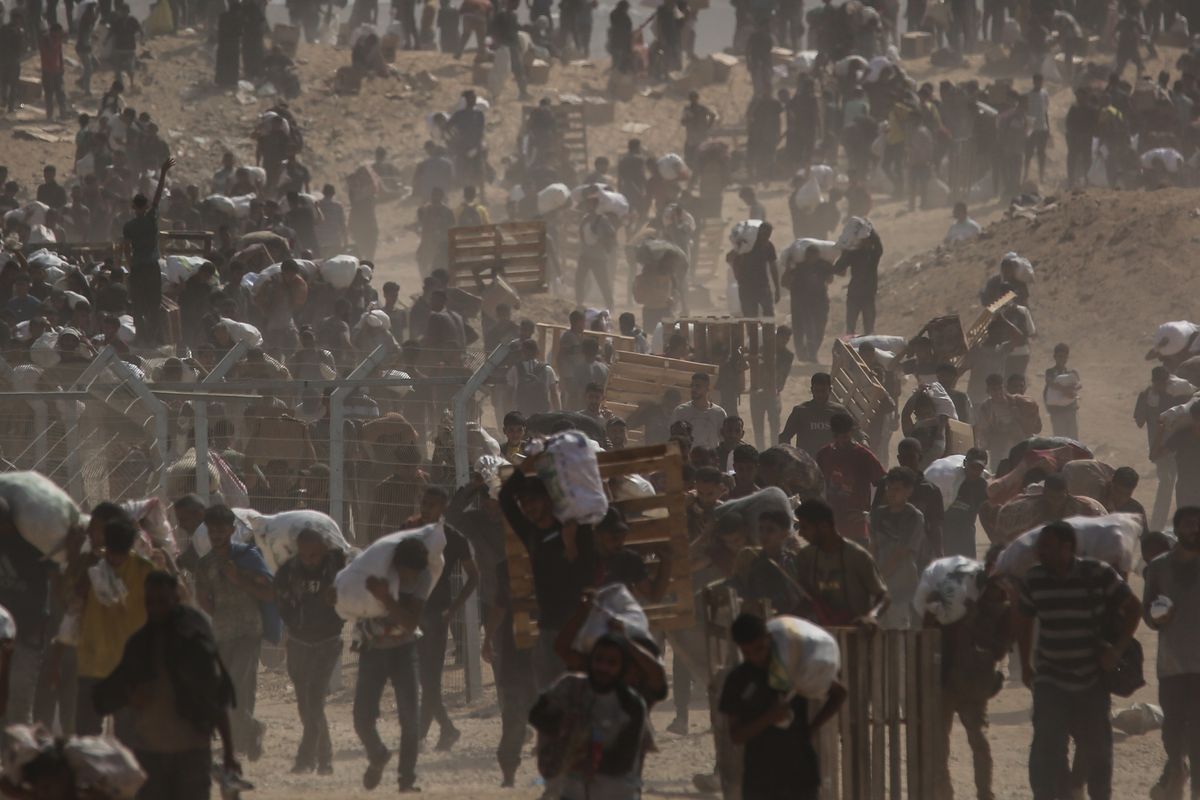Secretary of State Mike Pompeo’s comments on Sunday about Iran and its leadership ignited a war of words between the U.S. and Iran with President Trump weighing in via Twitter, warning Iran not to threaten the U.S., but how far-reaching will the impact of their words be?
Pompeo accused Iran’s Supreme Leader of participating in corruption, during his Sunday speech at California’s Reagan library, saying that Ayatollah Ali Khamenei maintains a hedge fund worth $95 billion.
"The level of corruption and wealth among regime leaders shows that Iran is run by something that resembles the mafia more than a government,” said Pompeo.
But why now? NBC News is quoting senior U.S. officials saying Iranian hackers are in a position to launch significant cyberattacks against the U.S. and Europe, though the same officials say that there is no indication that an attack is imminent.
It’s no surprise that Iran, primarily via proxies, has positioned itself for a number of future attacks against the West (see the case of an Iranian diplomat recently charge in connection with a failed terror plot in Paris by Cipher Brief Expert Norm Roule).
For a little more context about Iran’s regional ambitions as well as what might be behind the latest rhetoric, The Cipher Brief spoke with former National Intelligence Manager for Iran at the ODNI, Norm Roule.
First some context:
Background: Through its strong support of proxy groups in Lebanon, Syria, Iraq and Yemen, the Iranian government has asserted itself in the domestic affairs of several Middle Eastern countries, destabilizing central governments across the region.
- “The Islamic Republic of Iran remains an enduring threat to U.S. national interests because of Iranian support to anti-US terrorist groups and militants, the Assad regime, Houthi rebels in Yemen, and because of Iran’s development of advanced military capabilities.” – 2018 World Wide Threat Assessment
- Lebanon: Iran’s most notorious proxy group, Hezbollah, meaning “Party of God,” is based in southern Lebanon and was designated as a terrorist organization by the U.S. in October 1997. The movement has received significant funds and weapons from Tehran, which are often transferred through Syrian territory.
- Syria: Throughout the Syrian civil war, Iran and Hezbollah have stood behind Syrian President Bashar al-Assad and his forces, sending in military units to help combat rebel offensives. Tehran has also used Syria as a strategic passage route to ship weapons and cash to Hezbollah in southern Lebanon.
- Iraq: Iranian-aligned Shia militias comprised of more than 60,000 troops, known as the Popular Mobilization Forces (PMF), played an important role in ousting the Islamic State (ISIS) from Iraq. The PMF were formed in June 2014 when several pro-Iranian militia groups – including the Badr Organization, the Hezbollah Brigades, the Martyrs of Sayyid Brigades, Asaib Ahl al-Haq (AAH), and Jund al-Imam – joined together to form a unified front to battle ISIS. Although the Iraqi government now provides funding and has nominal control of the PMF, the militias maintain close ties to top Iranian commanders – most notoriously, the IRGC’s Qasem Souleimani.
- Yemen: Iran has been accused of supplying weapons and finances to Houthi rebels who launched a bloody insurgency in August 2014 against Yemen’s internationally recognized government. In December 2018, U.S. Ambassador to the United Nations Nikki Haley displayed an array of singed missile remnants and other parts that she said constituted “concrete” evidence that Iran had illegally supplied weapons to Houthi rebels in Yemen in direct violation of U.N. Security Council Resolution (UNSCR) 2231.
- Iran’s naval activity also presents a threat to U.S. geo-strategic interests in the region by seeking to inhibit U.S. freedom of navigation and engaging in potentially escalatory encounters with U.S naval vessels in critical waterways such as the Strait of Hormuz, the gateway for some 30 percent of the world’s oil supply. The actors primarily responsible are the IRGC’s Navy, and to a lesser extent, the Islamic Republic of Iran Navy, both of which seek to modernize through the development of armed drones, ballistic missiles, advanced naval mines, and unmanned explosive boats.
The Cipher Brief: What should we make of Secretary of State Pompeo’s strong comments about Iran’s leadership?
Roule: The Secretary of State’s speech was consistent with statements the administration has previously made on Iran and U.S. policy towards Iran. Although some have criticized his engagement with Iran, I believe any such engagement is always a positive step. The use of the Ronald Reagan library as venue for the speech underscores the administration’s desire to stress that its views on Iran are as deeply felt as Reagan’s views on Russia.
The Cipher Brief: Fair enough. What about the spike in the rhetoric then? How do we explain that?
Roule: I look at this from two perspectives. Let’s first consider Iran’s recent statements. Once again, Iran’s Supreme leader stated that he opposes dialogue with the United States, a comment which he has made dozens of times in the past. Second, we have President Rouhani implying that he would support closure of the Strait of Hormuz if Iran’s oil exports were to be completely ended. This statement is no doubt a genuine warning to Gulf oil producers and world oil markets as to the consequence of any complete cut off to Iran’s oil exports. It is hard to believe that Iran wouldn’t do this in such a circumstance.
Norman T. Roule, Former National Intelligence Manager for Iran, ODNI
"At the same time, Rouhani has made a number of statements since last summer which appeal to political hardliners and the IRGC. Some may view this as a reaction to the U.S. withdrawal from the nuclear deal, but it is more likely part of his plan to make himself more attractive as a potential successor to the Supreme leader. Rouhani’s’ use of the phrase “mother of all battles” is a strange phrase because of its use by Saddam Hussein."
In any case it remains unclear why Iran gets away with such comments. For years, Iran’s supporters have excused chants of ‘Death to America,’ threats to our troops, Israel and other allies as hardliner bombast. Few countries are allowed such a pass. The international community’s silence in the wake of this rhetoric likely reinforces the sense among some Iranian hardliners that there is little consequence for aggressive posturing.
In regard to President Trump’s subsequent response, this isn’t exactly a surprise. As we saw with North Korea, the President is not one to let bellicose rhetoric pass. Such U.S. responses have little support in Europe. For this reason, I wonder if Iran sought to provoke this response as a means of maintaining pressure on the U.S.-Europe relationship as well as to elicit friction in the acrimonious U.S. domestic political environment. It is also theoretically possible that the administration’s rhetoric is in response to recent reporting of Iran’s involvement in terrorism in Europe or the likelihood of renewed Iranian cyber activities. Nonetheless, there are no winners in a contest of rhetoric. It would be more productive to focus on re-establishing international unity against Iran’s malign behavior.
The Cipher Brief: In the coming months, there’s the short-term effect, which would be “you better not do this” type of warning, but longer term, what does this mean in practical terms for things like oil prices and for Iran’s overall posture in the region, six months from now?
Roule: Let’s look at the various elements of this problem, beginning with oil. Iran had a poor showing at the recent OPEC conference and its goal is to sell as much oil for as long as possible. Iran’s withdrawal from the oil market would hurt Iranian stability as much as the international economy and therefore this is unlikely. For this reason, oil markets are more likely to sustain disruption from events in Iraq, Libya, or Venezuela, or perhaps a weather event in the U.S. or Mexico, than by an Iranian decision to choke off Gulf exports. Moving to the potential for more Iranian bad behavior in the region, we need to consider what tools Iran can employ and where these tools would be most effectively employed against the U.S. and its partners. Regional countries have never been more sensitive to the Iranian threat. The Iranian cyber threat remains my primary concern, but we should also prepare for Iranian pressure against our forces in Iraq and Syria. In Yemen, the ongoing Hodeida operation has likely interfered with Iran’s ability to deliver weapons to the Houthis. Thus, Iran’s threat capacity exists in the Middle East, but it is unclear whether it can be significantly expanded.
Looking outside the region, the apparent Iranian terrorist operation against the opposition conference in France represents a template of what Iran can do against U.S. or other targets in Europe, Africa, Asia, or even the U.S. For this reason, I have no doubt that U.S. and partner security services have considered this potential.














